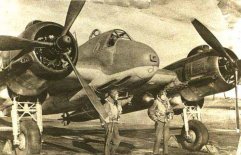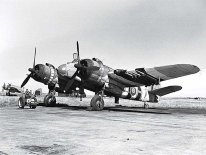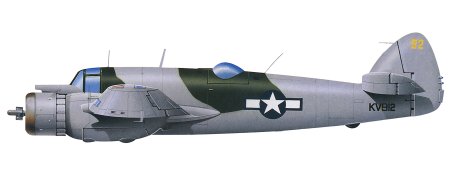
Bristol Beaufighter
A snub-nosed battleship of a plane which first appeared in 1939, the twin-engined Beaufighter was immensely strong and surprisingly manoeuvrable. Although early Hercules-engined Beaufighters were a little underpowered, the more powerful engines of later models made them fast and snappy.
The Beaufighter was roomy enough to carry the bulky first generation of AI (airborne intercept) radar, and when radar-equipped fighters joined the RAF, they became a strong reason for the Luftwaffe abandoning its night assaults on London.
Eventually, the 'Beau' fought on all fronts. Rockets were added to thetype's potent gun armament in 1943 and in combination with air-launched torpedoes made the beefy aircraft a superb long-range fighter, fighter bomber and anti-shipping machine.
Beaufighters destroyed German shipping running down the coast from Norway. Australian Beaufighters did a similar job with Japanese shipping, and it was their victims that gave the aircraft the name 'Whispering Death', a reference to the distinctive noise made by the sleeve-valve radial engine.
Dubbed 'Whispering Death' by the Japanese, the heavily-armed Bristol Beaufighter could be tricky to handle, especially in low speed flight. It was nevertheless one of the most lethal warplanes of its era and was a Royal Air Force stalwart in the battle against Germany's night offensive over Britain. The powerful, slab-winged Beaufighter went on to become one of the most potent anti-shipping strike aircraft of the war.
 |
 |
 |
| When the Bristol Beaufighter fired all eight rockets at once, the effect was devastating. A rocket salvo was equivalent to the broadside from a cruiser's main guns. |
Beaufighter crews had great confidence in their aircraft, which had a combination of long range, fair speed, massive strength and the heaviest gun armament of any Allied fighter. |
By 1944, many Beaufighters were used as anti-shipping torpedo aircraft. They brought German coastal shipping in Europe to a standstill. |
|
Bristol Beaufighter (Technical Specification) |
| Role |
Two seat low level strike fighter |
| Manufacturer |
Bristol |
| Maximum Speed |
488 kmh (330 mph) |
| Maximum Range |
2,366 km (1,470 miles) |
| Ceiling |
4,570 meters (29,000 feet) |
Weight
Empty
Maximum Takeoff |
7,076 kg (15,507 lbs)
11,431 kg (25,200 lbs) |
Dimensions
Wingspan
Length
Height
Wing Area |
17.63 meters (58 ft)
12.70 meters (42 ft)
4.83 meters (16 ft)
46.73 square meters (503 sq ft) |
| Engines |
Two Bristol Hercules XVIII radial piston engines each providing 1,320-kW (1,770 hp) |
| Armament |
Six forward-firing 7.7 mm (0.303 cal) machine guns
One flexible 7.7 mm Vickers 'K' machine gun in dorsal position
Four forward firing 20 mm (0.79 in) plus one torpedo
Two 113 kg (230 lbs) bombs or eight 41 kg (90 lbs) air to surface rockets |
Photo Gallery
Click here to submit your photo
| Have A Passion For Aircraft? |
Subscribe to our 14 series FREE newsletter
delivered weekly on World War 2 Aircraft factfile... |
| NB:- We hate spam as much as you do, so your email address will NEVER be shared with or sold to anyone else. That's a Guarantee. |
|
|





